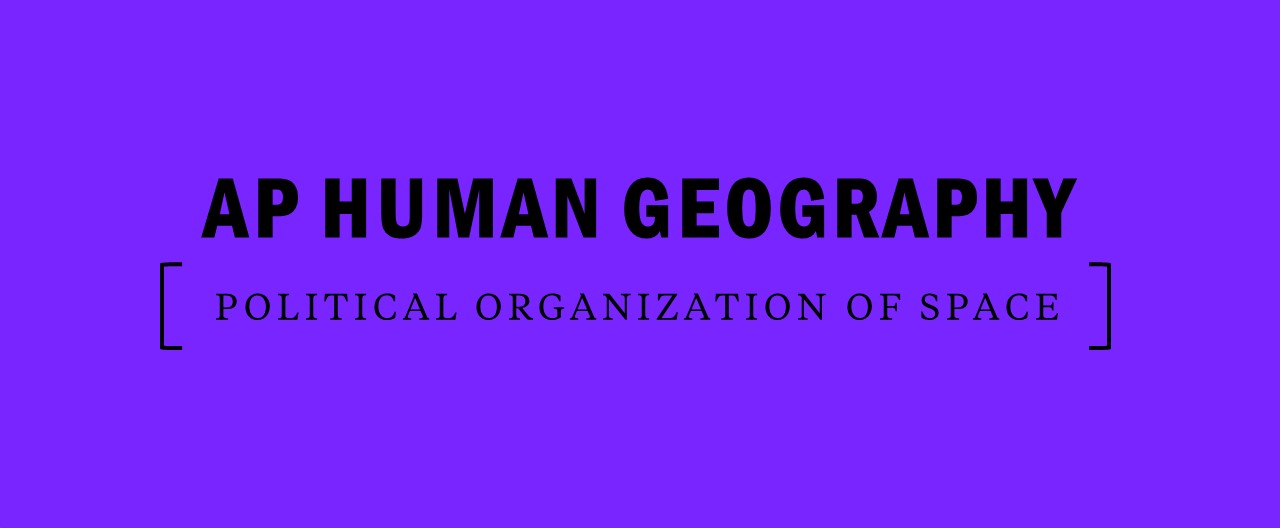AP Human Geography: Political Organization of Space Notes
Key Takeaways: Political Organization of Space
- A nation is a group of people with common cultural characteristics, whereas a state is an area with defined boundaries that has sovereignty within its borders. A nation-state is a country whose political boundaries correspond with its cultural boundaries.
- Boundary disputes arise for various reasons. Some arise from the demarcation of the boundary, while others arise from the allocation of resources along the border.
- Colonialism has had a profound impact on the world today. The major colonial powers in the western hemisphere were Great Britain, Portugal, Spain, and France.
- There are five shapes to countries: compact, elongated, fragmented, perforated, and prorupted. Each of these has advantages and disadvantages.
- The heartland theory established by Halford Mackinder suggests that whoever owns the heartland of Eastern Europe will control the world. The rimland theory developed by Nicholas Spykman suggests that sea power is more valuable and that alliances will keep the heartland in check. The domino theory, a response to the spread of communism, suggests that when one country falls, others around it will experience the same political instability.
- Ethnicity is determined by race, skin color, language, religion, and other factors. Race is different from ethnicity and is determined by perceived inheritable biological characteristics.
- Supranational organizations, such as the European Union and the United Nations, have a strong influence on the world’s political climate.
Political Organization of Space Key Terms
The Impact of Political Geography
- Political geography: A branch of geography that studies geographical influences on political systems and power relationships.
- Geopolitics: The study of the interplay between international political relations and the territories in which they occur.
- Core country: A country that is well- developed with a strong economic base.
- Periphery country: A less-developed, economically poor country.
Understanding Political Geography
- State: A politically bound area controlled by an established government that has authority over its internal affairs and foreign policy. Synonymous with the term “country” (e.g., Iraq, South Africa, Canada).
- Sovereignty: The political authority of a state to govern itself.
- Microstate (ministate): A country that is small in both population and area.
- City-state: A small sovereign state that is made up of a town or city and the surrounding area.
- Nation: A group of people bound together by some sense of a common culture, ethnicity, language, shared history, and attachment to a homeland (e.g., the French, Koreans, Mexicans).
- Stateless nation: A nation of people without a state that it considers home (e.g., Kurds, Basques, Palestinians, the Hmong).
- Nation-state: A state in which the cultural borders of a nation correspond with the state borders of a country (e.g. Japan, Iceland, Denmark).
Boundaries
- Political boundary: An invisible line that marks the outer limits of a state’s territory.
- Frontier: A zone of territory where no state has governing authority.
- Geometric boundary: A boundary created by using lines of latitude and longitude and their associated arcs.
- Physical boundary: A boundary based on the geographical features of the Earth’s surface.
- Ethnographic (cultural) boundary: A boundary based on ethnographic and cultural considerations, such as language and religion.
- Boundary evolution: The technical wording of a treaty that legally defines where a boundary should be located. Delimitation: The process of mapmakers placing the boundary on the map.
- Demarcation: The process of physically representing a boundary on the landscape.

